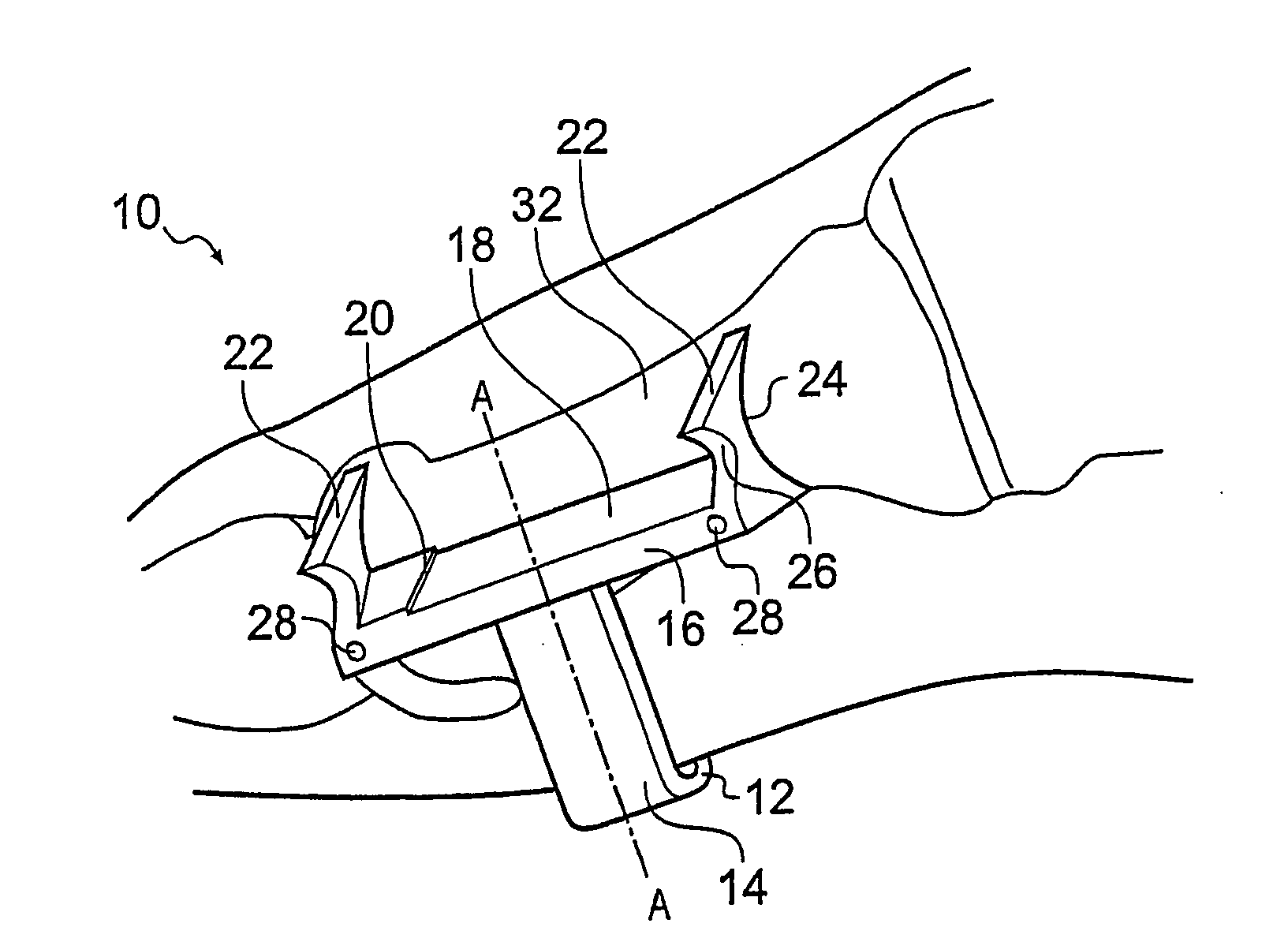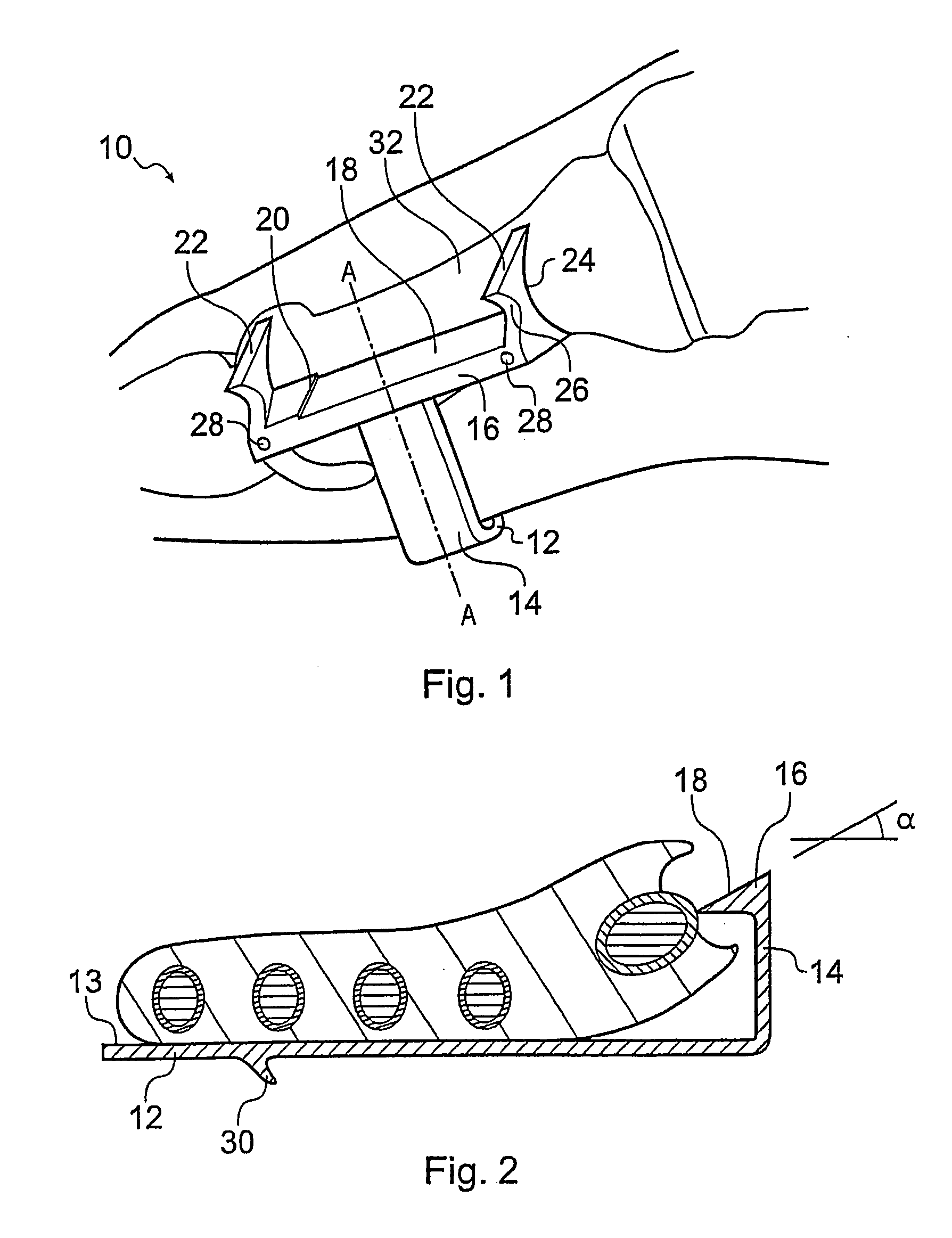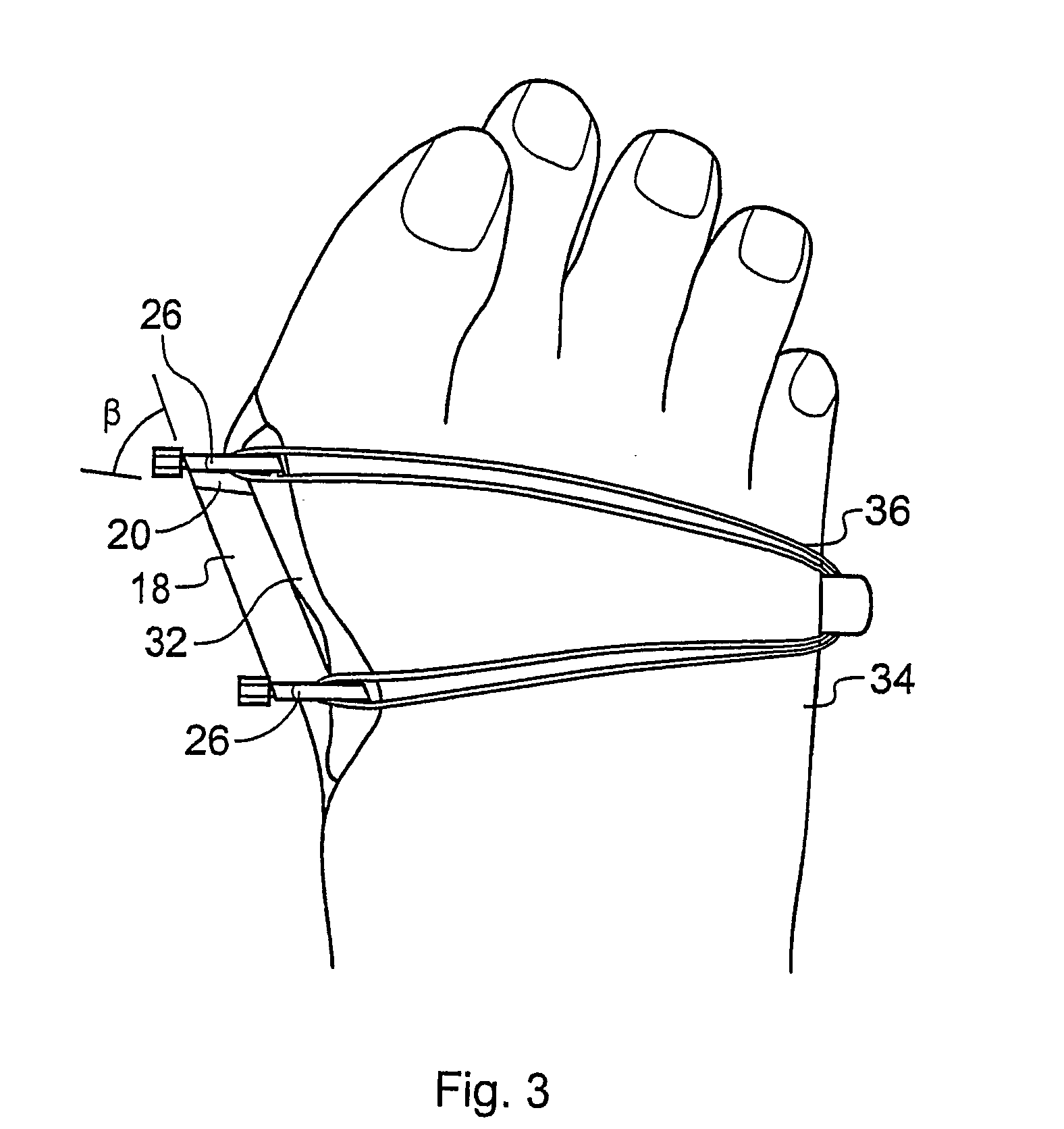Surgical jig
a surgical and jig technology, applied in the field of surgical jigs, can solve the problems of difficulty in shoe fitting, weight to be transferred to the second and third metatarsal heads, and difficulty in making cuts in the desired plan
- Summary
- Abstract
- Description
- Claims
- Application Information
AI Technical Summary
Benefits of technology
Problems solved by technology
Method used
Image
Examples
first embodiment
[0044] Referring firstly to FIGS. 1 and 2, a surgical jig is indicated generally at 10. The jig 10 comprises a base plate 12 having an upper reference surface 13, an arm 14 extending substantially perpendicularly from one end of the base plate 12, and a cutting guide or cutting block 16 mounted to the end of the arm 14. The arm 14 and base plate 12 are integrally formed.
[0045] The cutting guide 16 has a planar surface 18 disposed at an angle a relative to the reference surface 13 of the base plate 12, as indicated in FIG. 2. End stops 20, one of which is shown in FIG. 1, may be provided at each end of the planar surface 18, which limit the movement of a cutting implement moving along the planar surface. The end stops are provided at an angle 0, see FIG. 3, relative to the longitudinal axis of the cutting guide.
[0046] An appendage in the form of an abutment 22 extends from each end of the cutting guide 16 and is profiled on its edge with a substantially semi-circular recess 24, whic...
second embodiment
[0052] the invention will now be described with reference to FIG. 5 of the drawings. In this embodiment, the surgical jig 110 also comprises a base plate 112 having an upper reference surface 113, an arm 114 extending substantially perpendicularly from one end of the base plate 112, and a cutting guide or cutting block 116 mounted to the end of the arm 114.
[0053] The cutting guide 116 has a planar surface 118 disposed at an angle a relative to the reference surface 113 of the base plate 112. An appendage in the form of an abutment 122 extends from each end of the cutting guide 116 and is profiled on its edge with a substantially semi-circular recess 124, which, as in the first embodiment, is shaped to fit against an exposed metatarsal bone. The other side of the abutment is provided with hooks or lips 126. An aperture 128 is provided through each end of the cutting guide 116, through which a pin or wire can be passed in order to secure the cutting guide to the first metatarsal of th...
PUM
 Login to View More
Login to View More Abstract
Description
Claims
Application Information
 Login to View More
Login to View More - R&D
- Intellectual Property
- Life Sciences
- Materials
- Tech Scout
- Unparalleled Data Quality
- Higher Quality Content
- 60% Fewer Hallucinations
Browse by: Latest US Patents, China's latest patents, Technical Efficacy Thesaurus, Application Domain, Technology Topic, Popular Technical Reports.
© 2025 PatSnap. All rights reserved.Legal|Privacy policy|Modern Slavery Act Transparency Statement|Sitemap|About US| Contact US: help@patsnap.com



